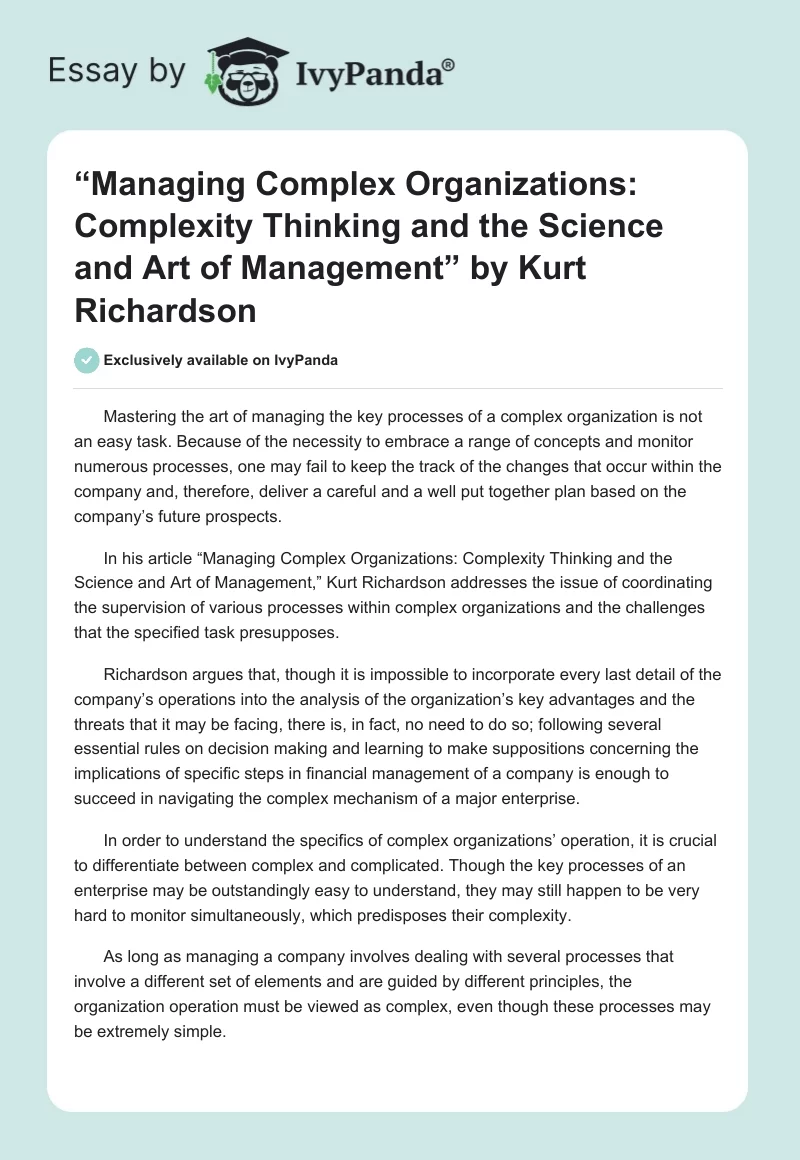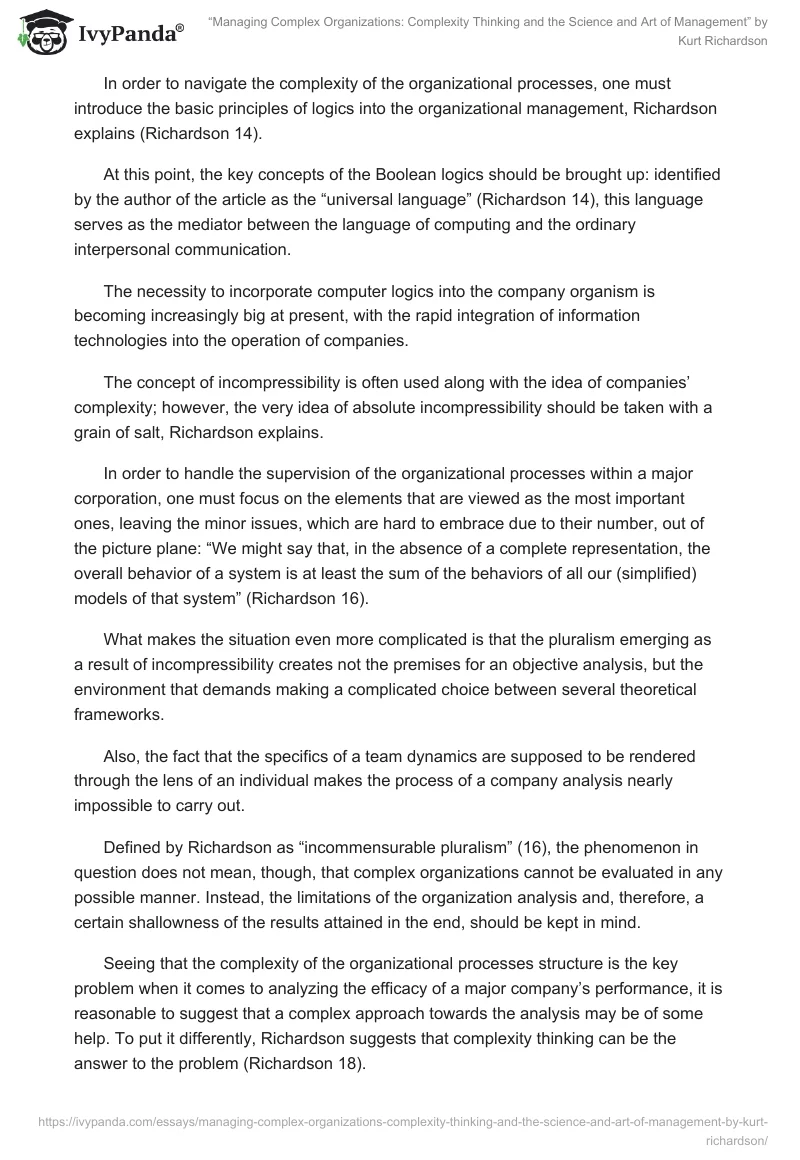Mastering the art of managing the key processes of a complex organization is not an easy task. Because of the necessity to embrace a range of concepts and monitor numerous processes, one may fail to keep the track of the changes that occur within the company and, therefore, deliver a careful and a well put together plan based on the company’s future prospects.
In his article “Managing Complex Organizations: Complexity Thinking and the Science and Art of Management,” Kurt Richardson addresses the issue of coordinating the supervision of various processes within complex organizations and the challenges that the specified task presupposes.
Richardson argues that, though it is impossible to incorporate every last detail of the company’s operations into the analysis of the organization’s key advantages and the threats that it may be facing, there is, in fact, no need to do so; following several essential rules on decision making and learning to make suppositions concerning the implications of specific steps in financial management of a company is enough to succeed in navigating the complex mechanism of a major enterprise.
In order to understand the specifics of complex organizations’ operation, it is crucial to differentiate between complex and complicated. Though the key processes of an enterprise may be outstandingly easy to understand, they may still happen to be very hard to monitor simultaneously, which predisposes their complexity.
As long as managing a company involves dealing with several processes that involve a different set of elements and are guided by different principles, the organization operation must be viewed as complex, even though these processes may be extremely simple.
In order to navigate the complexity of the organizational processes, one must introduce the basic principles of logics into the organizational management, Richardson explains (Richardson 14).
At this point, the key concepts of the Boolean logics should be brought up: identified by the author of the article as the “universal language” (Richardson 14), this language serves as the mediator between the language of computing and the ordinary interpersonal communication.
The necessity to incorporate computer logics into the company organism is becoming increasingly big at present, with the rapid integration of information technologies into the operation of companies.
The concept of incompressibility is often used along with the idea of companies’ complexity; however, the very idea of absolute incompressibility should be taken with a grain of salt, Richardson explains.
In order to handle the supervision of the organizational processes within a major corporation, one must focus on the elements that are viewed as the most important ones, leaving the minor issues, which are hard to embrace due to their number, out of the picture plane: “We might say that, in the absence of a complete representation, the overall behavior of a system is at least the sum of the behaviors of all our (simplified) models of that system” (Richardson 16).
What makes the situation even more complicated is that the pluralism emerging as a result of incompressibility creates not the premises for an objective analysis, but the environment that demands making a complicated choice between several theoretical frameworks.
Also, the fact that the specifics of a team dynamics are supposed to be rendered through the lens of an individual makes the process of a company analysis nearly impossible to carry out.
Defined by Richardson as “incommensurable pluralism” (16), the phenomenon in question does not mean, though, that complex organizations cannot be evaluated in any possible manner. Instead, the limitations of the organization analysis and, therefore, a certain shallowness of the results attained in the end, should be kept in mind.
Seeing that the complexity of the organizational processes structure is the key problem when it comes to analyzing the efficacy of a major company’s performance, it is reasonable to suggest that a complex approach towards the analysis may be of some help. To put it differently, Richardson suggests that complexity thinking can be the answer to the problem (Richardson 18).
Defined by the author as the incorporation of several key schools of thinking, particularly, the neo-reductionist one, the metaphorical one and the critical pluralist one (Richardson 18–21), the phenomenon in question is not a silver bullet, yet it can be viewed as a legitimate strategy for approaching the analysis of the complex organizational structure of a corporation.
Managing the processes of a complex organization is possible, despite the fact that one will never be able to embrace every single step in the course of the company’s operations. In order to handle the issues related to the evaluation of a consistently changing environment, one must follow fundamental logical principles and be flexible enough to adopt the approach that the solution of a unique conflict demands.
More importantly, one must get the company’s priorities straight before starting the analysis; otherwise, a range of essential factors will be omitted. As soon as the essential details are in the limelight, the assets of a corporation of any size can be evaluated properly.
Works Cited
Richardson, Kurt A. “Managing Complex Organizations: Complexity Thinking and the Science and Art of Management.” E:CO 10.2 (2008), 13–26. Print.


